When we’re traveling in an RV, it’s especially important to stay abreast of the weather. Certain weather conditions may call for action in terms of retracting your awnings (including your RV window awnings), moving the RV away from trees or water, to higher ground, or even moving to a larger structure. Smartphones are typically great for staying in touch with the weather, but it’s important to be prepared for emergencies, including times when we won’t have a cell connection. That’s where an RV weather station really shines.
Today we’re taking an in-depth look at RV weather stations – what they are, how they work, and how to set one up for your own preparedness.
- 1) What’s an RV Weather Station?
- 2) How Does an RV Weather Station Work?
- 3) Are RV Weather Stations Accurate?
- 4) How Can I Set Up a Digital Weather Station?
- 5) How Do I Choose an RV Weather Station?
- 6) Where Should I Mount the Weather Station Sensor?
- 7) What Are Some of the Most Popular RV Weather Stations?
- 8) Do You Use an RV Weather Station? Tell Us About It!
What’s an RV Weather Station?
RV weather stations use technology and instrumentation to gauge and monitor weather factors like barometric pressure, humidity, wind speed and direction, temperature, and rainfall. The information is assessed and displayed to give the traveler an idea of what’s coming and what actions need to be taken to avoid danger.
Many weather stations include a weather alert radio with the capacity to warn you of impending events such as tornadoes, and high winds coming.
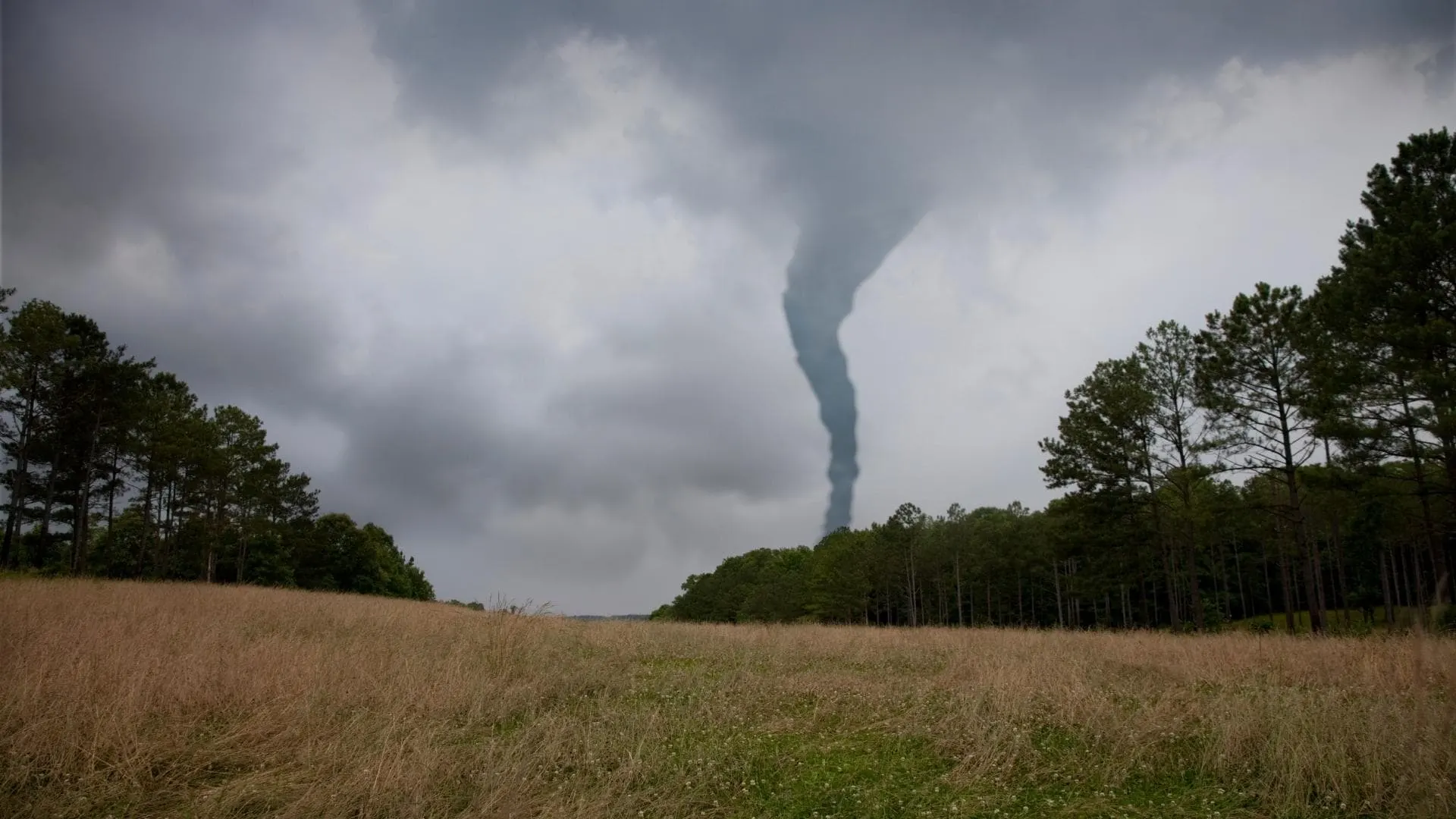
An RV weather station keeps you informed of developing weather conditions and can alert you to any dangers posed by dangerous weather coming your way… before they hit your location.
Alerts can be life-saving. If you know a tornado is heading your way, you can leave the area and find a safe place to take shelter. And if high winds are coming and you’re on the road, you may want to pull over at the next opportunity so you’re not traveling down the highway in high-wind conditions, which can be very dangerous in an RV.
So, the job of an RV weather station is to keep you informed of developing weather conditions and to alert you to any dangers posed by weather conditions coming your way.
And while we’re on the topic of dangerous weather, be sure to read our post “How Safe is an RV in a Lightning Storm?” for some important tips on how to stay safe when lightning is near.
How Does an RV Weather Station Work?
Basically, an automatic weather station measures atmospheric conditions and transmits them to a network or a display. Instruments measure weather observations to predict upcoming weather conditions.
For example, most weather stations have a barometer. A barometer measures air pressure (sometimes referred to as barometric pressure), and air pressure is a very good indicator of upcoming changes in weather patterns.
Low air pressure, for instance, may indicate that a storm is coming. So, if your RV weather station shows a drop in barometric pressure, you can look further into the coming weather patterns knowing that a storm is likely brewing.
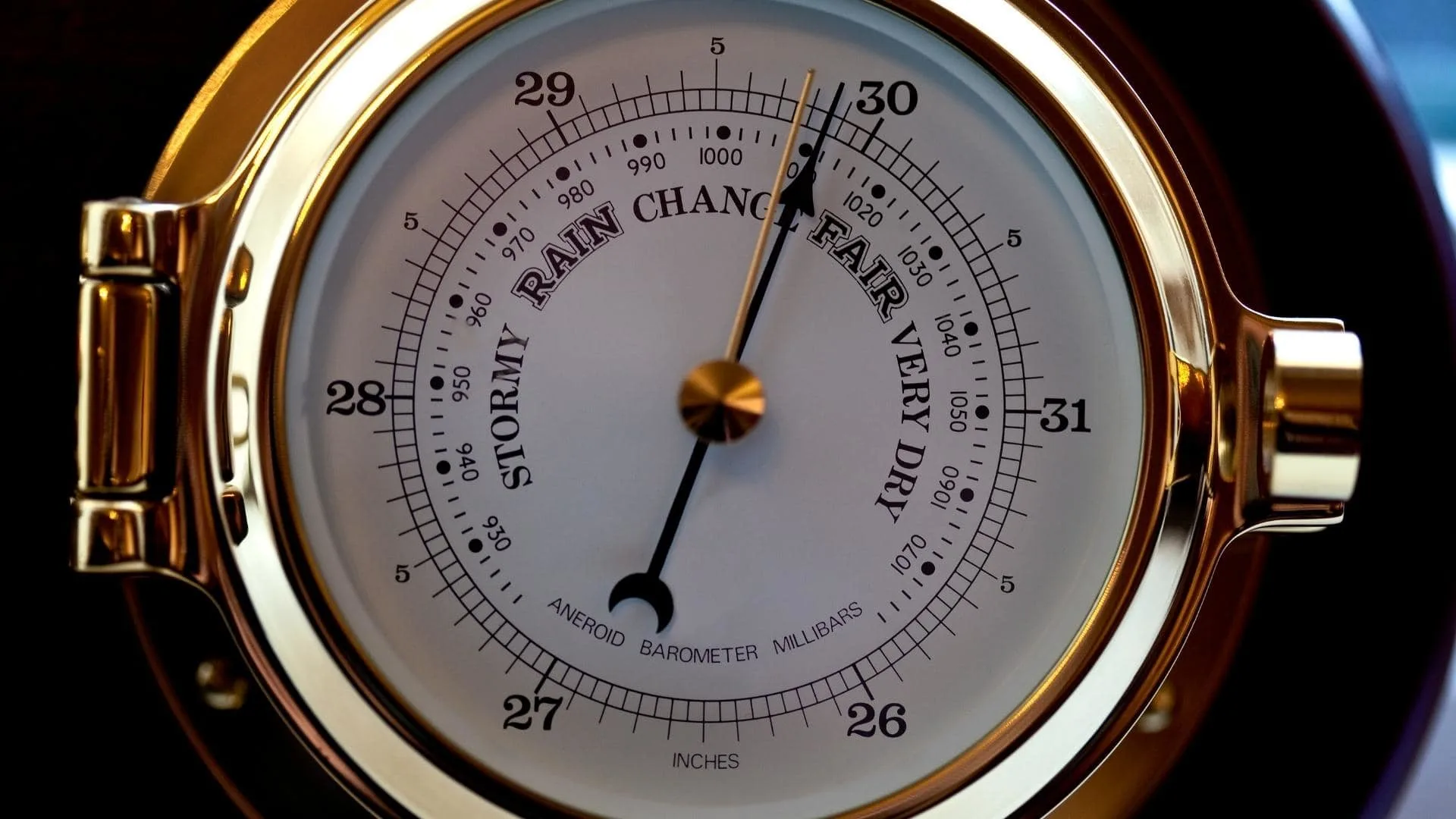
A drop in barometric pressure indicates that a storm is brewing.
Depending on the weather station, other factors that can be monitored in addition to atmospheric pressure are temperature, wind speed, wind direction, precipitation/rainfall, humidity, solar radiation, and visibility.
The factors displayed or reported are a function of what type of RV weather station you have. Some offer very basic information, and others display a lot of information with alerts to specific concerns.
Are RV Weather Stations Accurate?
Some RV weather stations are known for their accuracy. Some are even used by weather enthusiasts who upload the data displayed by their weather stations to the internet to benefit others who look at the data.
Not all weather stations offer this degree of accuracy, however. As in most things, you get what you pay for. The most inexpensive weather station may not be anywhere near as accurate as a station of reasonably good quality.
But it’s also important to remember that we’re not all seeking extraordinary accuracy. Many of us simply want to stay abreast of weather changes, storms, and high wind conditions, and most weather stations of decent quality offer at least this degree of accuracy, especially if you position your sensors correctly.
To that end, the Weather Station Lab website has helpful information that can help you to improve the accuracy of your weather station.
Most mid-range RV weather stations will have a temperature probe, a thermometer, and a barometer, and these will communicate data to your display station either via a wired connection or wirelessly.
How Can I Set Up a Digital Weather Station?
Setting up a digital weather station can be tricky, but you have to bear in mind that you’re not collecting climate data – just general local weather information. So, following some general guidelines will prove sufficient, though it may be trickier in some locations than others.
Your anemometer measures wind direction and speed and may it be best to mount it somewhere on the roof of your rig. This is because anemometers are most accurate when they’re mounted at just under 33 feet above ground level. Rain gauges are best mounted 4-6 feet above the ground.
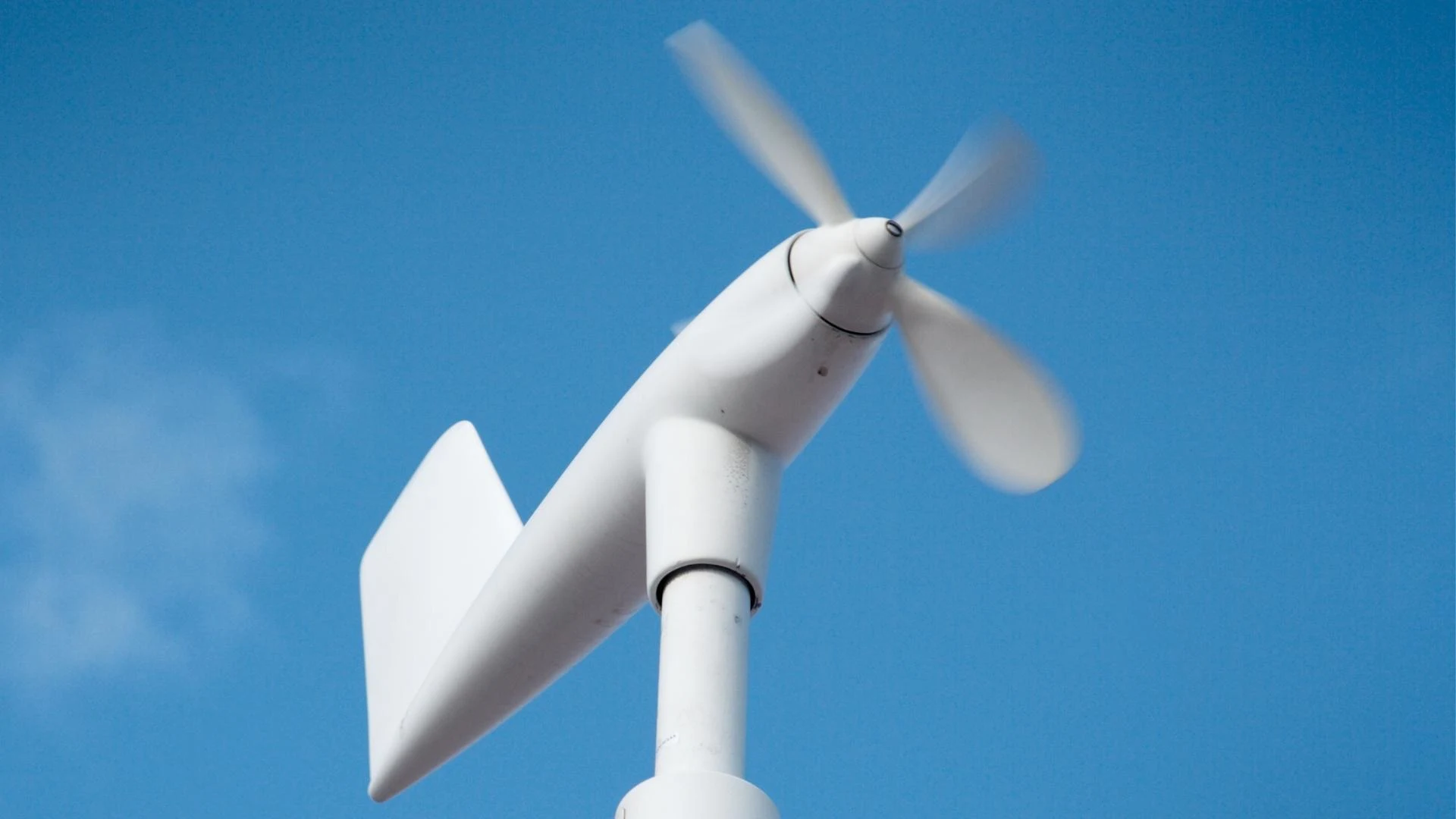
An anemometer measures wind direction and speed and is best mounted 33 feet or so above the ground.
There are some very specific guidelines set forth here, but your personal RV weather station may also come with guidelines and instructions.
The trick for RVers who are regularly on the move is to figure out whether you can have a permanent installation, or whether you’ll need to create an impermanent installation so that you can easily take the instruments down on days when you’ll be traveling. (If you travel frequently, this may be a real nuisance.)
The two most important setup requirements involve the placement of the sensors to allow them to obtain the most accurate readings possible for that unit. This involves not only height but also distances away from obstructions such as buildings and trees.
The second important requirement is that the sensors aren’t too far away to transmit data to the base unit. Every station has a distance limit, so you’ll want to keep this in mind when conducting your research as well, taking into consideration that the construction of your RV (metal framing, insulation, or even metal exterior walls) may impact the range of a wireless system.
How Do I Choose an RV Weather Station?
There are a number of considerations to make when choosing an RV weather station.
What Specific Information Are You Seeking?
First, you need to decide what information you’d like your weather station to measure/monitor, and research units that offer that information.
Distance Limitations?
We touched on this earlier, but again – every weather station has a distance limitation, so you’ll need to keep this in mind as you research and shop for a unit. You want the data you obtain to be accurately transmitted back to your base unit because this is the important information you seek in setting up a weather station in the first place.
Elevation Limitations?
If you travel to destinations with elevations above 6,000 feet, you’ll want to be sure to select a model of RV weather station that allows for higher elevations. Some units will work up to 12,000 feet, but if you need that feature, you’ll need to make sure that the model of weather station you choose will function at higher elevations.
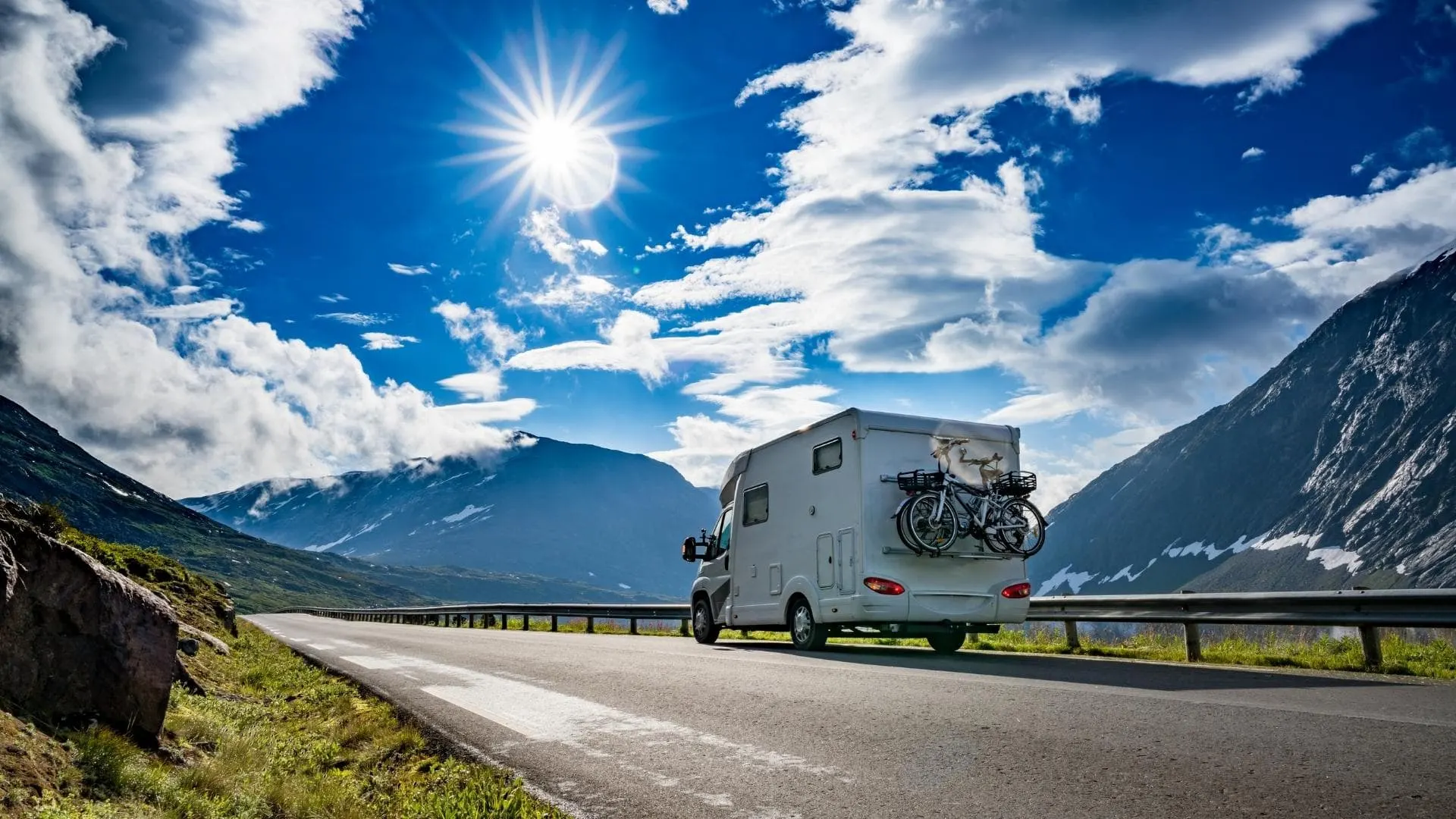
Some weather stations will work up to 12,000 feet. If you travel to destinations with elevations above 6,000 feet, you’ll want to make sure that the model of weather station you choose will function at higher elevations.
Update Interval
Your weather station’s base unit will update on a regular cycle/schedule. Update times generally range from every 2.5 seconds (these are the higher quality units) to every 30 seconds.
Wired or Wireless?
Do you want your unit to transmit data via a wired connection, or would you prefer wireless transmission? Be sure to look for an RV weather station that offers whichever connection you prefer.
Battery Operated?
You may wish for your weather station to be battery operated rather than wired to power. If so, be sure to look for a unit that offers this feature.
Opt for a High-Speed Wind Gauge
It’s very important that an RV weather station has a high-speed wind gauge (anemometer), especially if you want to permanently install the components of your station. When your RV is moving at 60 mph down the highway, your anemometer will need to be able to hold up to that level of wind (plus whatever ACTUAL wind may be blowing toward you).
Features
You’ll want to consider the various features of the weather station you select. For example, the screen size and user interface are important considerations, as are the features involved in the monitoring of weather signals.
You can opt for less expensive RV weather stations that simply monitor temperature and humidity, or you can purchase a higher-end unit that predicts severe weather events, tracks rainfall, and monitors wind speed.
Budget
And as always – budget is a concern with every purchase. Weather stations are available at a variety of price points, generally with features and quality to match. Decide how much money you want to spend on your weather station.
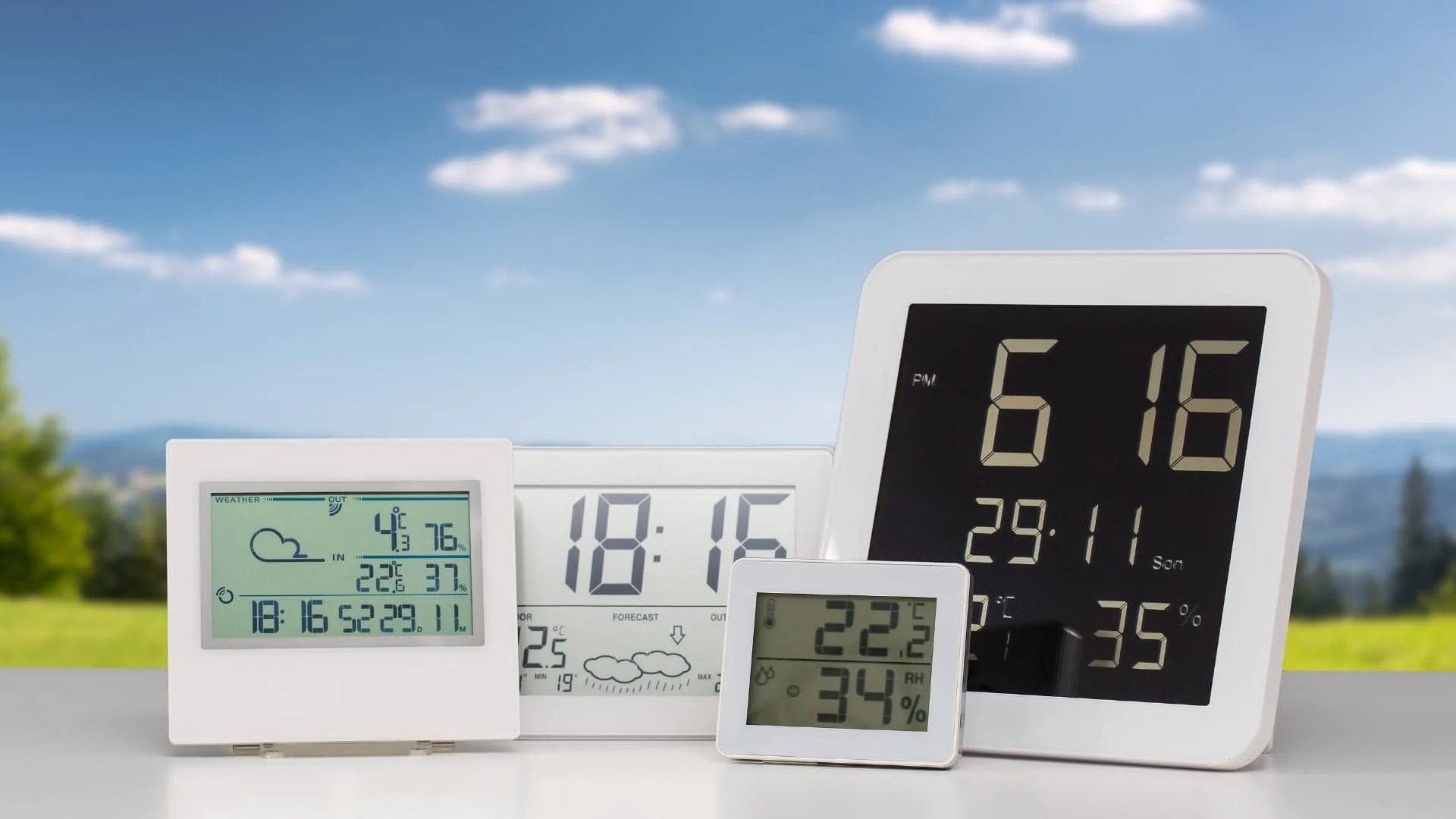
Weather stations are available with various features and at a variety of price points.
Where Should I Mount the Weather Station Sensor?
Depending on the weather station you choose, instructions specific to that type of weather station sensor should be provided by the manufacturer.
If you buy a weather station that monitors only temperature and humidity, you’ll want to mount it where the sensor won’t be in direct sunlight and will be protected from the rain.
Some RVers mount their weather station sensors under their rig, but wherever you put them, you definitely want to avoid placing them on or beside a window where sun exposure will be high at certain times of the day. Not only could this damage the sensor, but it’ll also likely give you inaccurate information.
What Are Some of the Most Popular RV Weather Stations?
Following are three of the most popular RV weather stations, all available on Amazon with reviews from RVers that you’ll want to consider prior to ordering.
La Crosse Technology C85845-INT Weather Station
This is a very popular weather station with well over 16,000 reviews on Amazon.
This unit is a wireless color weather station that offers animated color forecasts with trends that react to changing barometric pressure. You can monitor temperature trends with high and low alert settings, and measure temperature and humidity with daily minimum/maximum records.
The display is easy to read, with adjustable brightness and will indicate the strength of your signal reception and when your battery is weak or low.
This unit will also display the heat index and dew point, and has a transmission range of up to 300 ft.
- [DIGITAL COLOR FORECAST] Dynamic forecast icons with trend arrows (*Please allow 7-10 days for barometric calibration); RECORDS HI/LO values for temp...
- [CURRENT TEMPERATURES & HUMIDITY] Monitor Indoor & Wireless Outdoor Temperatures with humidity levels; CUSTOM set alerts (HI/LO for both temp &...
AcuRite Iris (5-in-1) Professional Weather Station with LCD Display and Lightning Detection
The AcuRite Iris 5-in-1 weather station offers real-time weather detection and a number of interesting features such as lightning detection.
With this unit, you’ll receive readings for indoor/outdoor temperature and humidity, wind speed and direction, barometric pressure, and rainfall. The patented self-calibrating technology provides a personalized weather forecast 12 hours from your current conditions using an algorithm that analyzes pressure and temperature changes over a particular time period.
The AcuRite station reports every 18 seconds. Some of the features that make this weather station popular are the high-speed wind anemometer, a solar-powered aspirating fan (to enhance temperature readings), a rain funnel with a self-emptying rain gauge, a large wind vane to catch even slight wind direction changes, and optical sensors inside the device to track the current wind direction.
This unit requires 6 AA batteries.
AcuRite makes a number of weather stations with a variety of features at various price points. All are very popular and have a minimum of 1,000 Amazon reviews with very good ratings.
- Real-Time Weather Conditions: Receive readings for indoor outdoor temperature and humidity, wind speed/direction, barometric pressure, and rainfall...
- Lightning Detection Weather Station: Provides an estimated distance to lightning-producing storms; lightning strike counter displays running total of...
And for those who would prefer an emergency weather radio rather than a weather station:
Midland – WR120B/WR120EZ – NOAA Emergency Weather Alert Radio
Another popular item with well over 15,000 Amazon reviews, this unit is not a weather station, but rather an emergency alert radio. This public-alert certified monitor receives 7 NOAA channels and gives flood, tornado, thunderstorm, and other warnings, and offers more than 60 emergency alerts, all customizable.
The unit has a 25-county memory system, a siren, voice alert, and flashing LED warning systems. It has a built-in alarm clock with snooze and uses three AA alkaline batteries for emergency backup in the event of a power outage.
- NOAA Weather Scan & Alert - This emergency weather alert radio features S.A.M.E localized programming and alert you to over 60 kinds of weather...
- S.A.M.E Localized Programming - The Specific Area Message Encoding (S.A.M.E.) allows the user to enter a code that is specific to your country, state,...
Do You Use an RV Weather Station? Tell Us About It!
Do you use an RV weather station, a weather radio, or both? We’d love to hear about how you track the weather, and how your experience has been with any weather station or weather alert radio you’ve used. Shoot us a comment!
Geek Out With Us Every Week
Join our newsletter to learn about all things RV-related. Every week we offer free tips, tricks, product reviews, and more to our online community of RVers. So, whether this is your first time on the road or you’re a seasoned expert, we’d love for you to geek out with us!





Loggenrock
Saturday 7th of May 2022
Midland weather alert radio runs 24/7 in the rig, Ambient Weather indoor/outdoor thermometer, hand held Brunton anemometer, compass and flag to monitor wind direction, dog to determine if it's raining...if fur is wet, it's raining...
Steve W.
Sunday 1st of May 2022
I've had weather stations at home for years, but am curious about a couple of aspects about this as it relates to RVs: wind speed & direction.
I can't help but think it would be hard on the anemometer and weather vane to be subjected to hours of highway wind speeds. Would one want to have the station be easy to stow and redeploy? And with regard to direction, at home you calibrate the direction once and you're done. With a mobile situation you'd need to recalibrate each time you park it.
Dale Jag
Saturday 11th of June 2022
@TheRVgeeks, I have an Ambient Weather station WS-2902A at the top of Edom Hill, near Palm Springs, CA. There are lots of windmills in the area, so you know there will be wind!!! The station many times have recorded over 60 mph and has topped over 100 mph. It's been running for over 3 years now with no problem. I guess the biggest problem to have one on an RV is hitting trees. I had one on my RV and did have to replace a few parts in the past. It's probably best to keep it low when traveling and raise it when you will be stationary.
As far as pointing it North? I just set it up as North being the front of the RV.
TheRVgeeks
Monday 2nd of May 2022
Hi Steve. With a unit with an outdoor anemometer, yes... that would best be used when stationary. As you point out, the extra wear & tear caused by 60+ mph highway speeds plus head-on wind speeds could be an issue. So that would mean you'd have to set it up and recalibrate at every stop (probably best used when your travel style is less "go-go-go"!).
John Schretlen
Saturday 30th of April 2022
I remember an old joke about small personal weather stations that goes something like this: Camper 1: I'm sick of this weather. Really sick of it. Camper 2: Yep. I think I'm going to get a weather station. 1: Why? 2: So I'll know the coming weather. 1: You want to know? Why? 2: To know when to stay away from you.
As somebody who made watching weather a big part of my career it is amazing how much weather reporting has changed over the past 4 decades.
Satellites have replace weather ships; forecasting computers have become more powerful and accurate; and data inputs have increased by the tens of thousands as private citizens with backyard weather stations have been allowed to send in their data.
These small personal weather stations are good, but in all honesty, unless you are really far off grid then right now the single best weather device is a smart phone with a few good weather apps.
Neal Davis
Saturday 30th of April 2022
This all very interesting and something I never considered until now. We do travel with a weather radio. It is powered by a 9-volt battery and can be tuned to three different frequencies. It was a gift from a running buddy many years ago when our daily mileages made us connoisseurs of weather (arthritis has since precluded my daily excursions). Once we gain possession of Newton the New Aire, then we'll seriously consider adding a weather station. I expect we'll at least add the basic one with exterior temperature and humidity. Whatever we do will be a much better informed decision thanks to this article. Thank you!